
Maggiore Square (Piazza Maggiore) is the largest and most central square in the historic center of Bologna. For this reason, Piazza Maggiore is simply called the Great Square.
The history of the square originates from the 13th century. In the 1200 years the municipality started to purchase the house and adjacent land for the construction of the square, which would become an important element and gathered all kinds of urban activities (manufacturing and various services) at the same time.
Originally the area was called the Curia or Platea Communis Communis. The current name of the square was only in the 16th century, although, in the interval of time between the expulsion of the Austrian army and in 1944, it was named in honor of the king of Italy Vittorio Emanuele II. After 1945 the area and surrounding areas became officially known under the current name Piazza Maggiore.
During its history, the area has undergone many changes. The current appearance of Piazza Maggiore, for the most part, reflects the layout of the 15th and 16th centuries.
Today, the square is always crowded, there is a cafe with tables under the open sky, as well as shops and hotels. Square spend holidays, festivals and other events.
From Piazza Maggiore originate from the crowded streets of Bologna, lined with historic buildings, attractions, shops, cafes, restaurants and hotels.
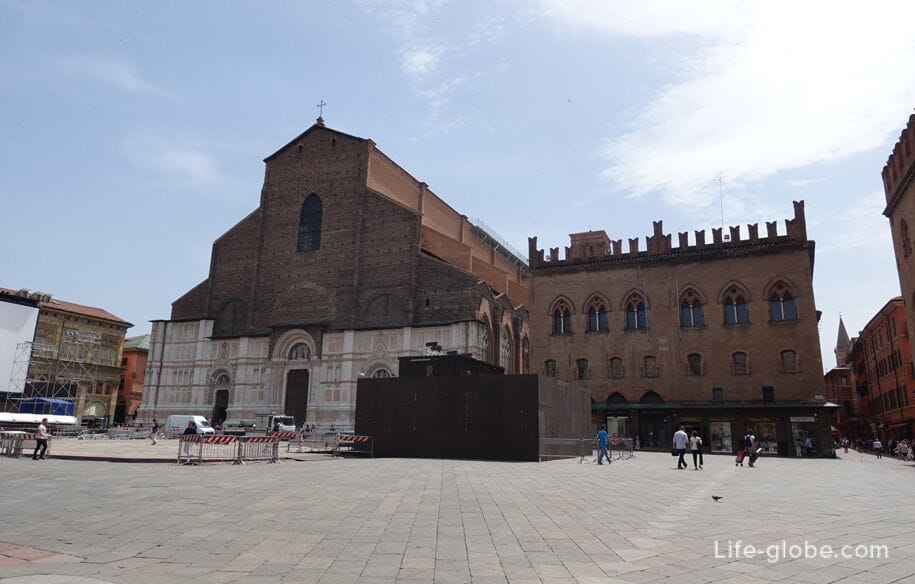
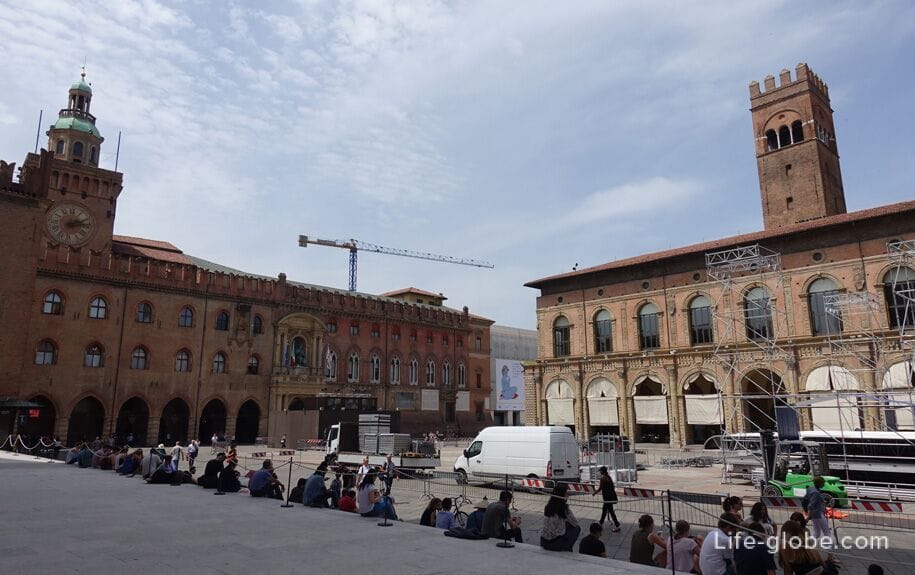

The perimeter of the square is decorated with the main administrative and religious buildings in the history of Bologna, including:
- Basilica di San Petronio (Basilica di San Petronio) - Cathedral of Bologna, is the most significant structure, among other monuments, erected over centuries of history of the city.
The Basilica dedicated to the patron Saint of the city, the Holy Petronius, who was Bishop of Bologna in the fifth century.
The construction of the Church began in 1390 on the donations of the common people and Senate of Bologna, and since then, its main facade was left unfinished.
For centuries in the Basilica was carried out receptions of popes and kings who visited Bologna.
In 1894 was opened the Museum of the Basilica of San Petronio, to store drawings of the facade and wooden models of various architects involved in the construction of shrines and relics, choral books and some marble tiles of the sixteenth century. The Museum also exhibited instruments used by the Professor of astronomy of the Bologna University Giovanni Domenico Cassini for the calculations associated with the creation of a sundial (Meridian), established in 1655 to replace the previous one destroyed during the expansion of the Basilica.
Today the Church is most clearly expresses the culture, religious and civic traditions of the city. A masterpiece of architecture and art - Basilica of San Petronio, is today one of the symbols of Bologna.
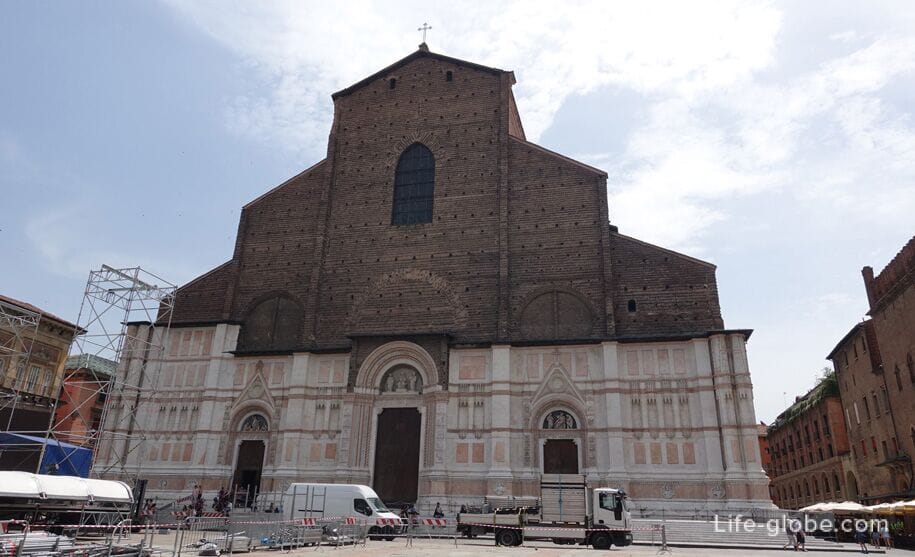
The interior of the Basilica is characterized by lateral chapels, the altar with a wooden crucifix of the 15th century and a wooden choir of the 15th century created by Agostino de MArchI.
In the Basilica you can climb to the panoramic terrace for 3 Euros to visit the chapel of the Magi - €3, as well as the Museum of Saint-Petronius;
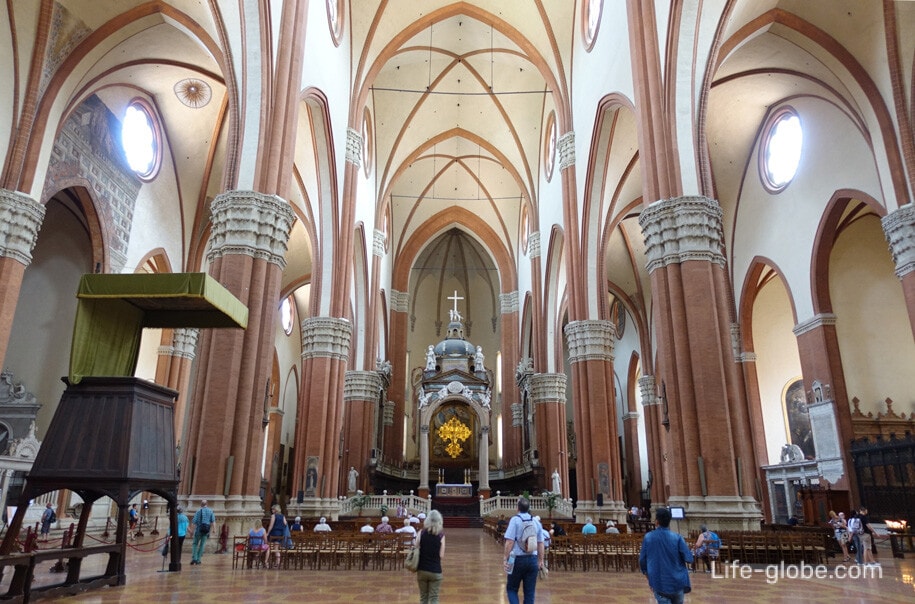
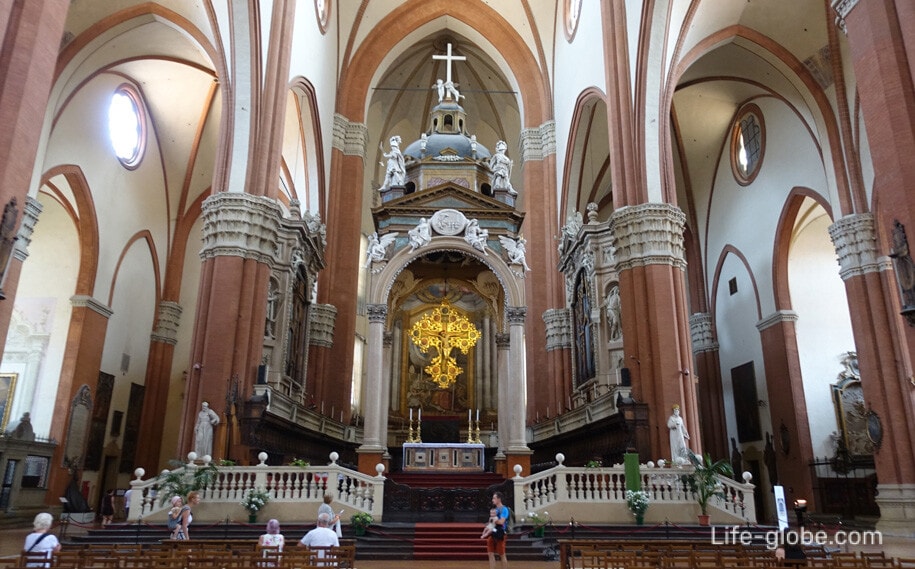
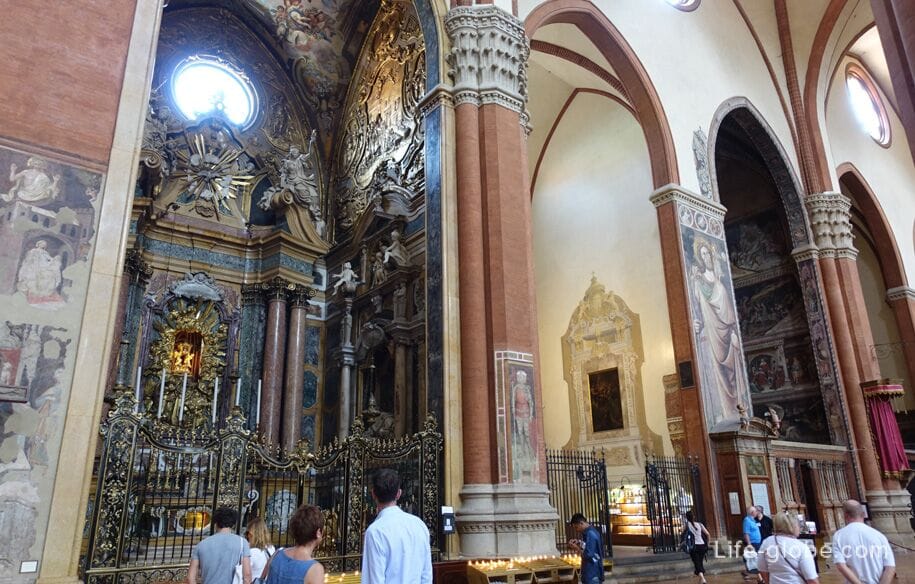
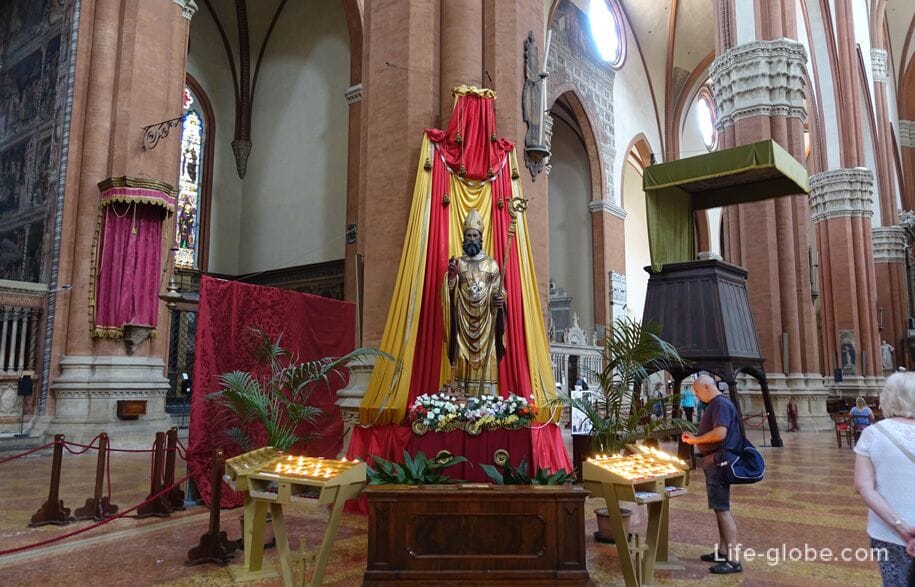
- the Palazzo del Podesta (Palazzo del Podesta) - first place city government, built in 1200 years.
The facade of the Palace facing the Basilica of San Petronio.
Initially, the Palazzo was the bell tower, used to call citizens in cases of emergency situations and events (assemblies, wars, etc.). Originally it was a wooden structure, in 1259 replaced with modern terracotta quadrangular tower built by Alberto di S. Pietro.
In the 16-18 centuries the Palazzo was used as a theatre. In the 20th century the building was decorated with frescoes by Adolfo de Carolis.
The original structure of the Palazzo is not much different from today's. Now the Palazzo del podestà is a long building with a large hall on the upper floor. On the ground floor is a double open arcade, the so-called Voltone del Podestà, along which are shops and cafes;
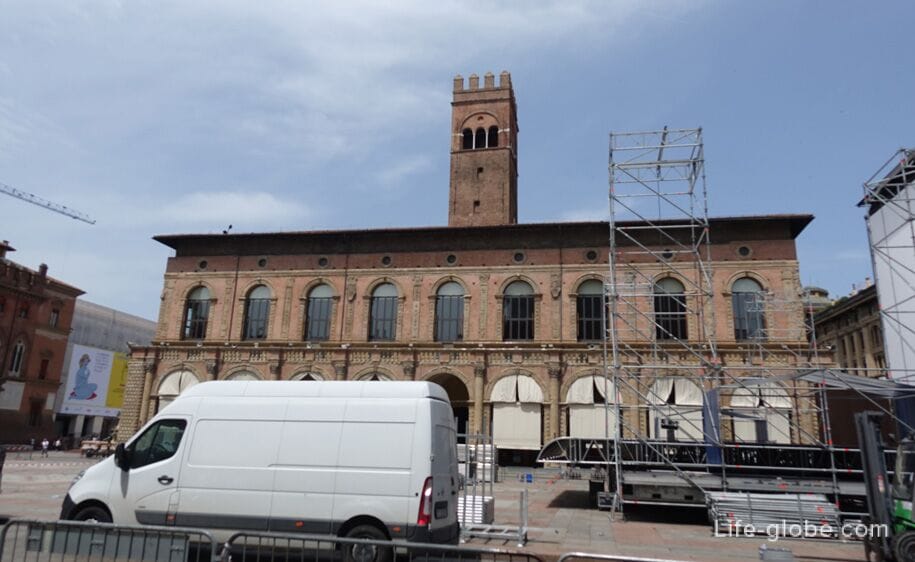
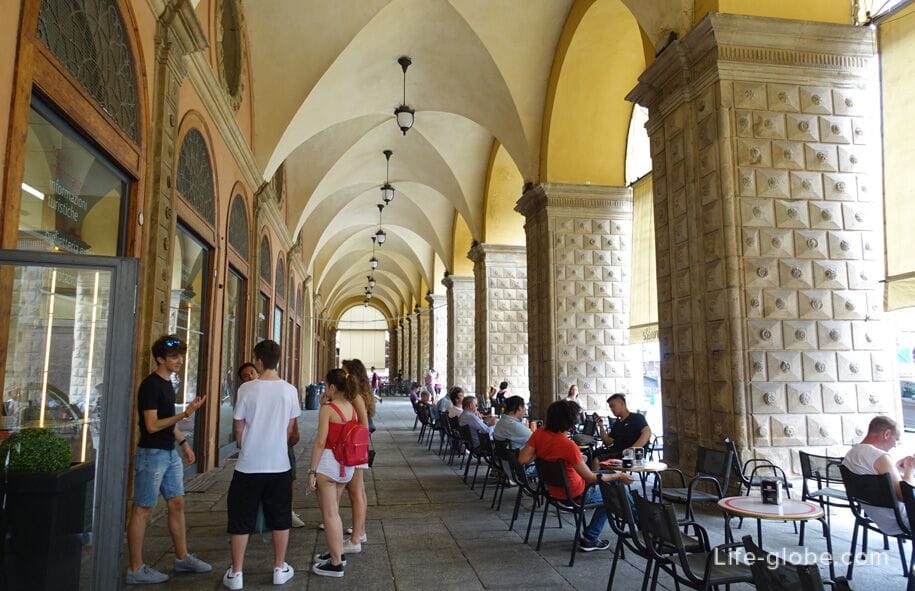
- the Palazzo dei Banchi (Banchi, Palazzo dei) - a former banking center, a Palace designed in the Renaissance style, located on the Eastern side of Piazza Maggiore, is the last building erected on the perimeter of the square.
The Palace with its further significant restructuring dates back to the second half of the 16th century. The facade of the Palace is based on fifteen arches, two of which allow to pass to the streets of old Clavator (Via Clavatur) and Pesari (Via Pescherie Vecchie).
In the Palazzo shops and cafes, offices and private apartments.
The Central structure of the Palace are: the municipal archaeological Museum, the Church of Santa Maria della Vita and Mezzo market (Mercato di Mezzo);
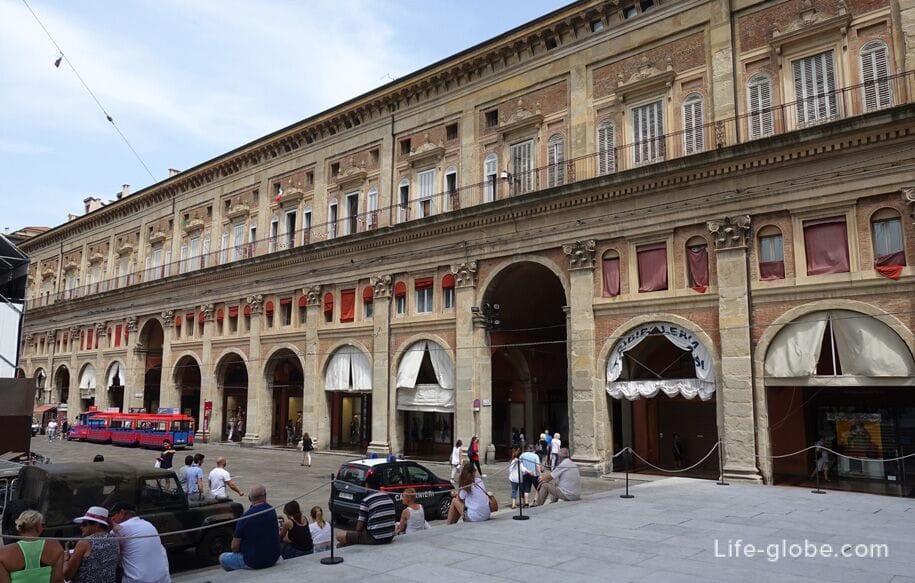
- Palazzo d'accursio or Comunale / Palace of the Commune (Palazzo d Accursio / Palazzo Comunale), former city hall, now the art Museum is the most magnificent and externally conspicuous building in the Piazza Maggiore.
The Palace originally was the home of lawyer'accursio. Then, together with other buildings, was acquired by the Council, to create a core centre of Bologna, which led to the extension of buildings to accommodate offices.
In 1336, the building became the residence of the elders, the highest magistrates of the commune, and then seat of government.
Renovated and enlarged in the first half of the fifteenth century, with the participation of architect Fioravante, the Palazzo was enriched with tower'accursio (orre d Accursio) and the clock on the tower.
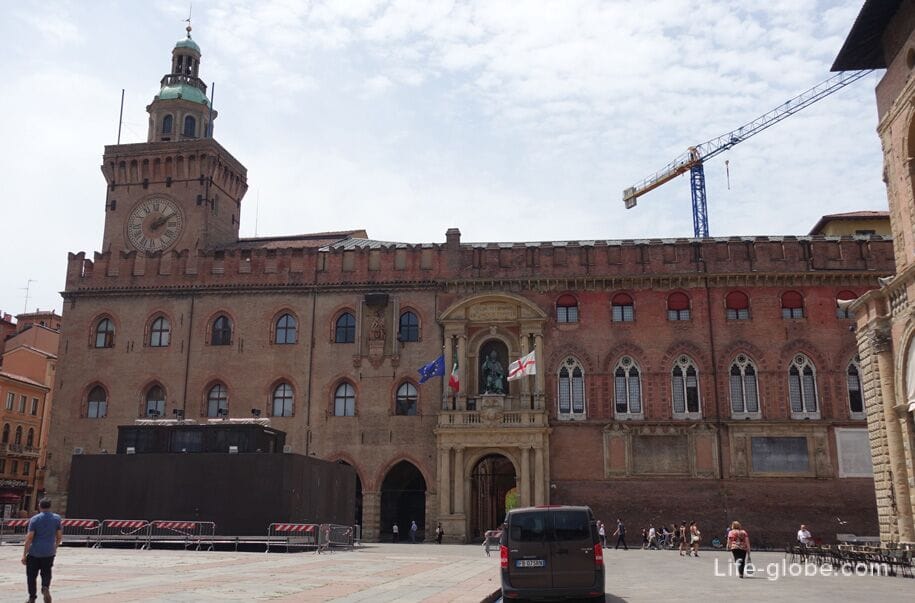
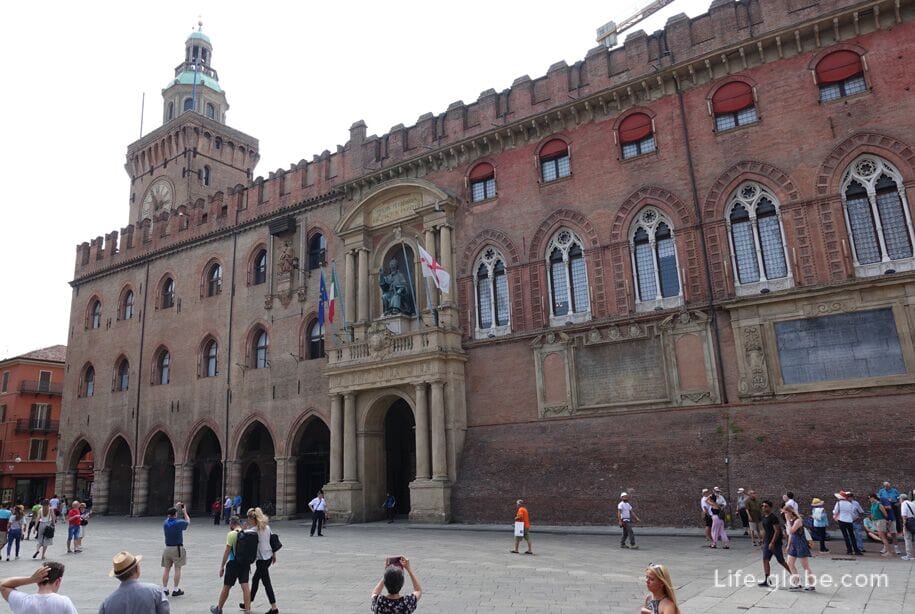
The entrance to the inner Palace walls free, with the exception of rooms with collections of the Museum;

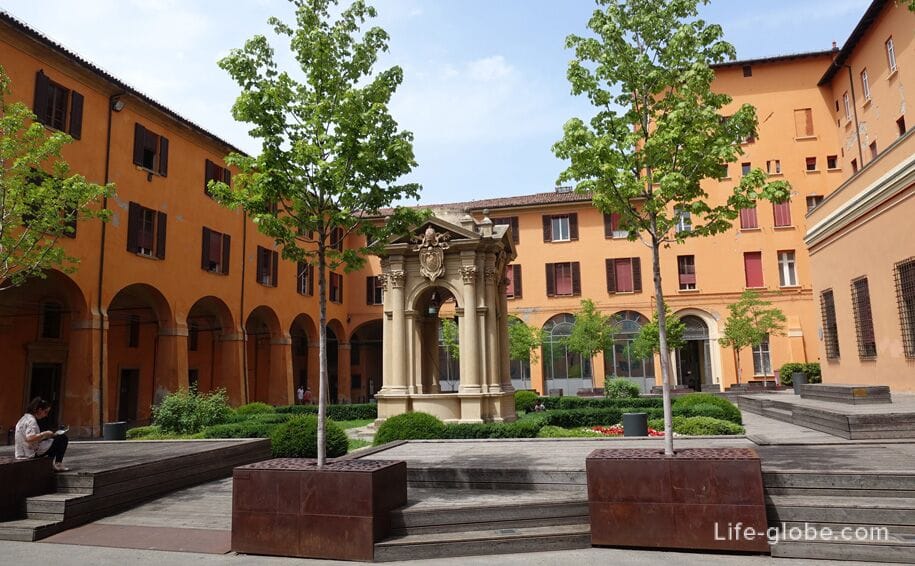
- Palazzo dei Notai (Palazzo dei Notai) - formerly the Guild of notaries.
A small historic building overlooking Piazza Maggiore, built in 1381 by the project of Berto Cavalletto and Lorenzo da Bagnomaria the city's notaries Guild as their placement.
In the interior are frescoes of the 15th century. Can only be visited during exhibitions and events.
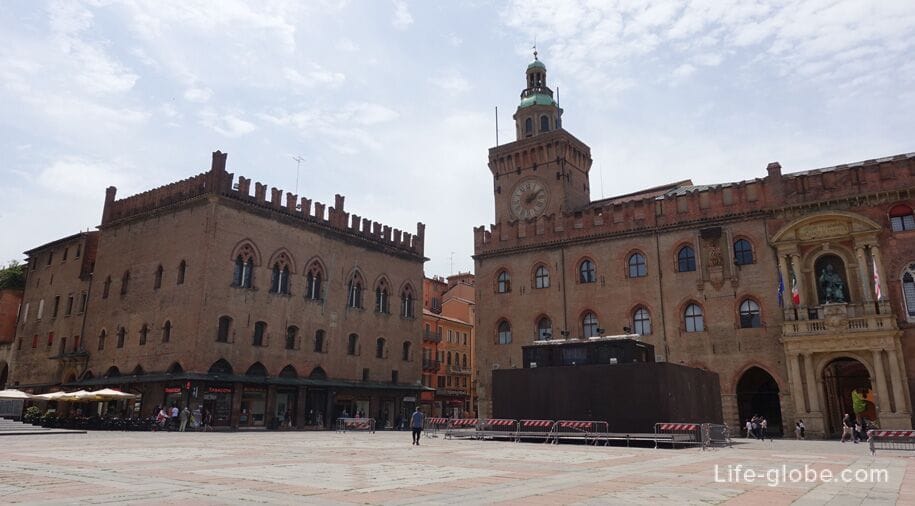
To the North-West side of the Piazza Maggiore is adjacent to another attractive area, founded in 1565 - the area of Neptune (Piazza del Nettuno), which is decorated with the famous monumental Fontana del Nettuno or fountain of Neptune (Fontana del Nettuno) on two of the sides are important historical buildings: the library of Salaborsa and Palazzo Re Enzo.
Piazza Maggiore and Neptune, quite smoothly flow into one another, jointly forming the largest space of the historic center of the city with the architectural ensemble, which includes some of the most important shrines and buildings in the centre of Bologna. Read more about square Neptune in Bologna...

Accommodation facilities (hotels, apartments) in the historical centre of Bologna...